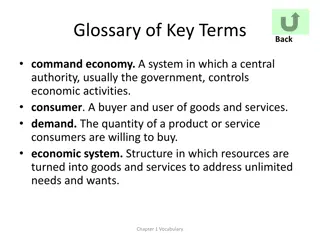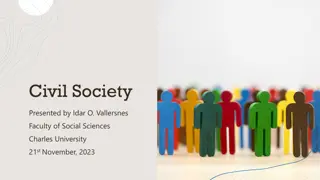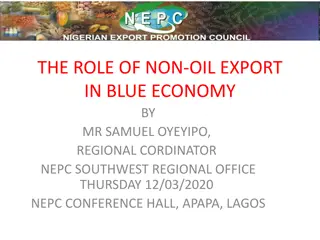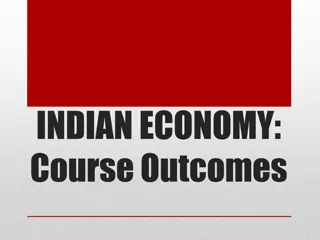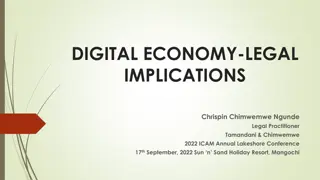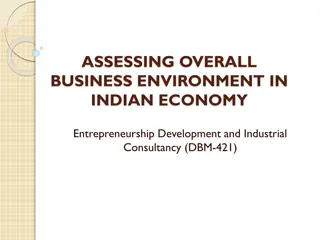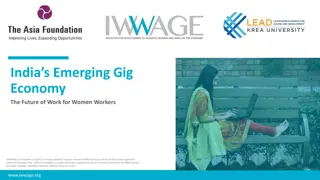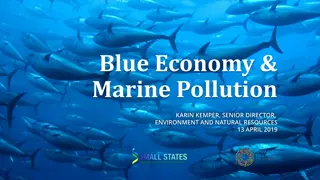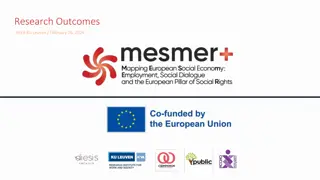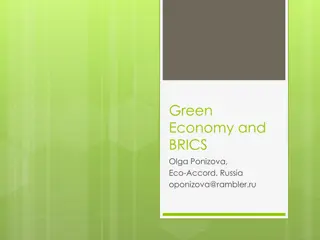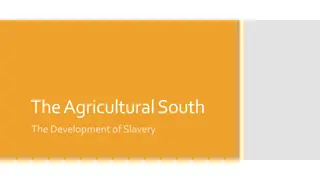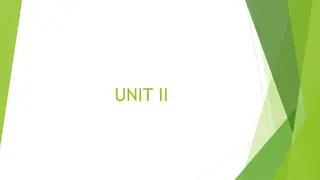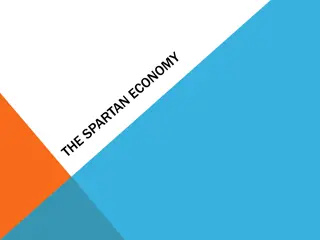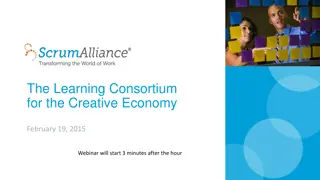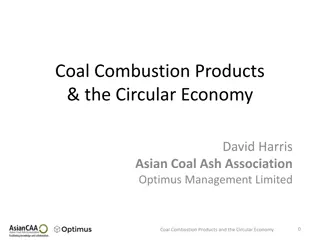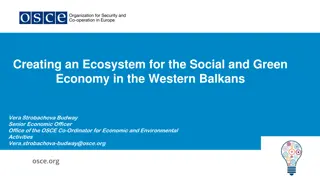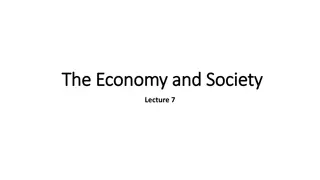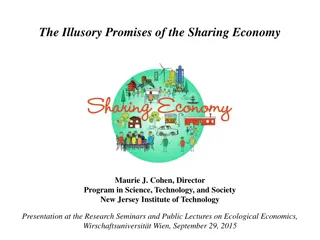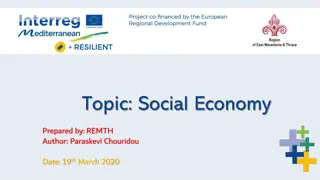Evolution of Society and Information Economy
The content discusses the transition from mass society to diversity, the rise of single-issue groups in politics, the shift to an information economy, and the emergence of a new industrial sector. It highlights the impact of technological advancements on societal structures and economic landscapes, emphasizing the need to adapt to these changes for sustainable progress.
Uploaded on Mar 14, 2025 | 2 Views
Download Presentation

Please find below an Image/Link to download the presentation.
The content on the website is provided AS IS for your information and personal use only. It may not be sold, licensed, or shared on other websites without obtaining consent from the author.If you encounter any issues during the download, it is possible that the publisher has removed the file from their server.
You are allowed to download the files provided on this website for personal or commercial use, subject to the condition that they are used lawfully. All files are the property of their respective owners.
The content on the website is provided AS IS for your information and personal use only. It may not be sold, licensed, or shared on other websites without obtaining consent from the author.
E N D
Presentation Transcript
JURNALISME ONLINE Konteks Konteks
JURNALISME ONLINE Konteks Konteks
JURNALISME ONLINE Gelombang Gelombang Ketiga Ketiga Peradaban Peradaban As the Second Wave produced a mass society, the Third Wave demassifies us, moving the entire social system to a much higher level of diversity and complexity. This revolutionary process, much like the biological differentiation that occurs in evolution, helps explain one of today's most widely noted political phenomena the collapse of consensus. From one end of the industrial world to the other we hear politicians lamenting the loss of "national purpose," the absence of the good old "Dunkirk spirit," the erosion of "national unity," and the sudden, bewildering proliferation of high- powered splinter groups. The latest buzzword in Washington is "single issue group," referring to the political organizations springing up by the thousands, usually around what each perceives as a single burning issue: abortion, gun control, gay rights, school busing, nuclear power, and so on. So diverse are these interests at both the national and local levels that politicians and officials can no longer keep track of them. (Alvin Toffler, 1984)
JURNALISME ONLINE Masyarakat Masyarakat Informasi Informasi Information is a distinguishing feature of the modern world. Where once economies were built on industry and conquest, we are now part of a global information economy. Pervasive media, burgeoning information occupations and the development of the Internet convince many that living in an Information Society is the destiny of us all. Information s presence appears evident everywhere, from daily interaction in postmodern styles to the waging of Information War, from information intensive labour to the iPOD. Coping in an era of information flows, of virtual relationships and breakneck change appears to pose challenges to one and all. (Frank Webster, 2006)
JURNALISME ONLINE Digitalisasi Digitalisasi pinterest.com
JURNALISME ONLINE Digitalisasi Digitalisasi Masa prasejarah hingga 10.000 tahun lalu => Keberadaan manusia ditentukan kondisi alam fisik, seperti gempa, gunung meletus, dan perubahan iklim. (Berburu, meramu, nomaden) Masa 10.000 tahun terakhir => ,Keberadaan manusia menuruti alam mental. (Pertanian, menetap, kolonialisme, perang besar) Masa 40 tahun terakhir => Keberadaan manusia ditentukan alam matematika. (Algoritma, internet, komputasi awan) (B. Sudjatmiko, 2018)
JURNALISME ONLINE Industri Industri Baru Baru The overall structure of the economy was changing as well. A new industrial sector was emerging from the convergence among computing (computers, soft ware, services), communications (telephony, cable, satellite, wireless), and content (entertainment, publishing, information providers). (Don Tapscott, 2015)
JURNALISME ONLINE Struktur Struktur Industri Industri Baru Baru Don Tapscott, 2014
JURNALISME ONLINE Ekonomi Ekonomi Digital Digital The economy for the Age of Networked Intelligence is a digital economy. In the old economy, information fl ow was physical: cash, checks, invoices, bills of lading, reports, face-to-face meetings, analog telephone calls or radio and elevision transmissions, blueprints, maps, photographs, musical scores, and direct mail advertisements. In the new economy, information in all its forms becomes digital reduced to bits stored in computers and racing at the speed of light across networks. Using this binary code of computers, information and communications become digital ones and zeros. The new world of possibilities thereby created is as significant as the invention of language itself, the old paradigm on which all the physically based interactions occurred. (Don Tapscott, 2014)
JURNALISME ONLINE Konsep Konsep Pokok Pokok Teknologi Teknologi In a culture like ours, long accustomed to splitting and dividing all things as a means of control, it is sometimes a bit of a shock to be reminded that, in operational and practical fact, the medium is the message the medium is the message. This is merely to say that the personal and social consequences of any medium that is, of any extension of ourselves result from the new scale that is introduced into our affairs by each extension of ourselves, or by any new technology. (Marshall McLuhan, 1964)
JURNALISME ONLINE Konsep Konsep Pokok Pokok Teknologi Teknologi Arnold Pacey, 1983
JURNALISME ONLINE Media Media Baru Baru Cetak | Penyiaran | Daring ink to hyperlink
JURNALISME ONLINE Media Media Baru Baru The defining aspects of the new media are that they are digital, interactive, social, asynchronous asynchronous, multimedia, and narrowcasted narrowcasted. These particular characteristics are important in distinguishing a new, audience-focused conception of the media from the older SMCR model, which emphasized the oneway transmission of messages. (Straubhaar, LaRose, Davenport, 2011)
JURNALISME ONLINE Media Media Now Now Asynchronous Asynchronous Communication Communication. Simultaneity, the notion that everyone in the audience receives the message at about the same time (or synchronously), was once another defining characteristic of the mass media. That view made sense before consumer recording technology became commonplace in the 1960s and 1970s. Before then, you had to catch a program the fi rst time it aired or wait for the reruns. However, the notion never applied very well to fi lm, not without stretching the same time to cover a period of several weeks. Situations that lack simultaneity are examples of asynchronous communication. Consumers ability to time shift programs using Digital Video Recorders (DVRs) and Internet video renders the notion of simultaneity obsolete, as they can choose when to watch a program regardless of the time and day it originally airs. The television networks are now time-shifting themselves by uploading their own programs on the Internet within hours of the time of their original broadcast. Both postal mail and e-mail are two common examples of asynchronous interpersonal communication. (Straubhaar, LaRose, Davenport, 2011)
JURNALISME ONLINE Media Media Now Now Demographic characteristics, such as sex and age, once the sole means of defi ning audiences, are being replaced by lifestyles and user needs, and even individual preferences including purchasing and online surfing behavior. Rather than homogenize audiences, the new communications media cater to specialized groups and define new niches and even customize content for individuals. (Straubhaar, LaRose, Davenport, 2011) Narrowcasting Narrowcasting. . Another sign of the growing power of the audience in the new media is the practice of targeting content to smaller audiences, sometimes called narrowcasting (as opposed to broadcasting). Advanced audience research methods help the media cater to smaller audiences by enhancing the richness and speed of audience feedback. The result is that narrowcasting dedicating communication channels to specific audience subgroups, or market segments is now practical. replaced by a focus on
JURNALISME ONLINE Media Now Media Now Social Social Media audience power in the new media world is the ability of audiences to contribute content of their own, not merely selecting it as in our example of American Idol, but actually creating it themselves. Since this involves sharing words and images with other users in the course of social interactions, social media has emerged as an umbrella term for this phenomenon. Behind the scenes, new Media. Another dimension of technologies have made it possible to strip away the middle layers of media organizations and to shrink the minimum size of media enterprises back to that of small cottage industries and even to individual media entrepreneurs. Giant media corporations are still with us, and indeed they are getting bigger than ever, but the number of people required to turn out a media product within them is shrinking. Affordable TV cameras, audio recorders, and digital editing technology put people from all walks of life in the producer s chair. (Straubhaar, LaRose, Davenport, 2011)
JURNALISME ONLINE Konvergensi Konvergensi media convergence | participatory culture | collective intelligence.
JURNALISME ONLINE Konvergensi Konvergensi A process called the "convergence of modes" is blurring the lines between media, even between point-to-point communications, such as the post, telephone, and telegraph, and mass communications, such as the press, radio, and television. (Ithiel de Sola Pool, 1984)
JURNALISME ONLINE Konvergensi Konvergensi Welcome to convergence culture, where old and new media collide, where grassroots and corporate media intersect, where the power of the media producer and the power of the media consumer interact in unpredictable ways. (Henry Jenkins, 2006) In the world of media convergence, every important story gets told, every brand gets sold, and every consumer gets courted across multiple media platforms. (Henry Jenkins, 2006)
JURNALISME ONLINE Konvergensi Konvergensi Welcome to convergence culture, where old and new media collide, where grassroots and corporate media intersect, where the power of the media producer and the power of the media consumer interact in unpredictable ways. (Henry Jenkins, 2006) In the world of media convergence, every important story gets told, every brand gets sold, and every consumer gets courted across multiple media platforms. (Henry Jenkins, 2006)
JURNALISME ONLINE Konvergensi Konvergensi In the world of media convergence, every important story gets told, every brand gets sold, and every consumer gets courted across multiple media platforms. (Henry Jenkins, 2006)
JURNALISME ONLINE Prinsip Prinsip Media Daring Media Daring Multimedia production also brings financial benefits in the partnerships and mergers between different media companies which allow providers such as NBC News to deliver news over three media: broadcast TV, cable and, through MSNBC, the web. Thus in the age of online journalism we might add interactivity to the short list of journalistic core values. It is determined partly by the technological aspects of the medium, by its availability, but, more importantly, by changes in society including a levelling of its structural hierarchies and with the way in which we understand text. In using hypertext, or linked elements of text or information, the relationship between reader and author undergoes a shift that inverts traditional understandings of the construction of meaning and reshapes some of the values that underpin it. (Jim Hall, 2001)
JURNALISME ONLINE Prinsip Prinsip Media Daring Media Daring (Stephen Quinn & Stephen Lamble, 2007)
JURNALISME ONLINE Prinsip Prinsip The web arrives with surveillance and feedback technologies, intimations of power and control, which enable advertisers and others to target consumers personally. Perhaps a more useful understanding of the streams of information which now galvanise the world is through Paul Virilio and McKenzie Wark s vector . Information in this construction has no direction or fixed destination and no predetermined meaning. The vector comprises only force and, hence, effect. (Jim Hall, 2001)
JURNALISME ONLINE Prinsip Prinsip The biggest challenge facing journalists in this media age is knowing which tools to use, when. Its is not about technical skills (although access to these is always a factor), but about conceptual ones: thinking creatively about storytelling and news gathering-and, increasingly, distribution too. (Paul Bradshaw & Liisa Rohumaa, 2013)
JURNALISME ONLINE Prinsip Prinsip BASIC BASIC BREVITY ADAPTABILITY SCANNABILITY INTERACTIVITY COMMUNITY & CONVERSATION (Paul Bradshaw)
JURNALISME ONLINE Prinsip Prinsip PROBLEM: Kehidupan modern serbacepat Too many things to do, so little time Kebutuhan mendapatkan informasi segera SOLUSI: Informasi yang ringkas, singkat, padat KEEP IT SHORT SIMPLE KEEP IT SHORT SIMPLE
JURNALISME ONLINE Prinsip Prinsip PROBLEM: Info apa yang dibutuhkan? Apa yang akan dilakukan dengan info tersebut? SOLUSI: Informasi harus bisa disajikan dalam berbagai format Jurnalis harus bisa beradaptasi
JURNALISME ONLINE Prinsip Prinsip PROBLEM: Orang membaca 25% lebih lambat di layar ketimbang di buku. Orang scanning ketimbang membaca. SOLUSI: Text harus pendek, scannable, terstruktur (ada judul, intro, body), ada link. (300-700 kata) Apa yang di-scan dari sebuah artikel? Keyword Kalimat yang menarik Info tak berguna? Skip saja!
JURNALISME ONLINE Prinsip Prinsip PROBLEM: Manusia butuh berinteraksi Manusia butuh berbagi SOLUSI: Shareable options FB, Twitter, Insta, WAG, etc MAKE IT VIRAL! MAKE IT VIRAL!
JURNALISME ONLINE Prinsip Prinsip PROBLEM User bukan sekadar audiens User adalah co-Creators User juga bertindak sebagai jurnalis SOLUSI: Bangun engagement INVITE INVITE AND RESPOND AND RESPOND
JURNALISME ONLINE Karakteristik Karakteristik Diseminasi Diseminasi Informasi Informasi Immediacy On the Web, there is the potential to update your news, showbiz and any other pages simultaneously and repeatedly, minute by minute, to give both the latest news and low-down on the pop star. A single news site can post dozens of different updates on stories every few minutes. Immediacy supercharged by such flexibility is a potent tool, particularly for breaking news. However, note, again, the word potential . (Mike Ward, 2002)
JURNALISME ONLINE Karakteristik Karakteristik Diseminasi Diseminasi Informasi Informasi Multiple pagination A web site can have hundred of separate pages, linked to each other but also capable of being read and understood in isolation. This increases the amount and range of both the news coverage and the potential audience. (Mike Ward, 2002)
JURNALISME ONLINE Karakteristik Karakteristik Diseminasi Diseminasi Informasi Informasi Multimedia Web sites can offer, with varying degrees of user-friendliness, text, audio, graphics, animated graphics, still pictures and moving pictures. TV is king but video so far has been the Cinderella of web publishing or perhaps ugly sister would be a better description. Tiny, fuzzy, jumping pictures of what you can see anyway on television (e.g. television news reports) have belied the web s cutting-edge reputation. (Mike Ward, 2002)
JURNALISME ONLINE Karakteristik Karakteristik Diseminasi Diseminasi Informasi Informasi Flexible delivery platforms A single online news provider can take one piece of information and put it on a web news page, include it in a searchable database of information or send it to a mobile phone display screen. How to re-purpose content to harness this flexibility of online delivery is pre-occupying many news organizations at present. The economics of re-purposing are very attractive. Gathering the information, particularly in news, is often the expensive part. Once you have the information, it makes sense to get it to as many people and in as many ways as possible. It is probably the only thing accountants and journalists agree on. (Mike Ward, 2002)
JURNALISME ONLINE Karakteristik Karakteristik Diseminasi Diseminasi Informasi Informasi Archiving Exploring a well-resourced web site for content is like playing a game of three-dimensional chess. You can sit in the middle of the site and go forward (immediacy), sideways (links to sites, related stories and interactivity) or down into the archive. Archives are particularly effective for news web sites. As they mature, they build into a useful resource of material which is both archived and, equally importantly, searchable. This can provide an important context to current reportage on the site as well as a research resource in its own right. (Mike Ward, 2002)
JURNALISME ONLINE Karakteristik Karakteristik Diseminasi Diseminasi Informasi Informasi The relationship with the reader Non-linear construction and consumption of content The Web is based on non-linear consumption. So, people do not have to go from item one to two to three. When choosing the stories that interest them, they can, and do, go from four to thirtysix to fifteen to two and so on. It is a web, not a line. (Mike Ward, 2002)
JURNALISME ONLINE Karakteristik Karakteristik Diseminasi Interactivity This audience-driven consumption is an important element of interactivity. It allows the consumer to interact with the product. However, there are other levels: the consumer interacting with the provider, the most obvious example of which are the readers who e-mail journalists with their views on what has been written or to give further information; the consumer interacting with the consumer, for example the use of message boards on web sites allows readers to exchange Diseminasi Informasi Informasi views and information; this can provide different textures and perspective to a story; and the consumer can also become the provider as the online medium matures, some of the voices from out there are becoming more authoritative and confident, making a contribution to the main content. (Mike Ward, 2002)
JURNALISME ONLINE Karakteristik Karakteristik Diseminasi Linkage The traditional role of the journalist is further challenged by the online capacity to link readers to other sites. A newspaper could run a story about, for example, lack of funding for school repairs in its area. It might contain a news piece and several related features or fact files. The online version of the paper could offer all of that, but also link the reader to the web sites for the local education authority, the relevant government department, the schools inspectorate, local pressure groups, teachers unions, the headteachers association, political parties, etc. (Mike Ward, 2002) Diseminasi Informasi Informasi
JURNALISME ONLINE Daftar Daftar Pustaka Pustaka Quinn, Stephen., Lamble, Stephen. 2007. Online News Gathering: Research and Reporting for Journalism. Elsevier. Hall, Jim. 2001. Online Journalism: A Critical Primer. Pluto Press. Jenkins, Henry. 2006. Convergence Culture: Where Old and New Media Collide. New York University Press. Straubhaar, J., LaRose, R., Davenport. 2012. Media Now: Understanding Media, Culture and Technology. 5th Ed. Update. Thomson. Ward, Mike. 2002. Journalism Online. Focal Press. Bradshaw, Paul., Rohumaa, Liisa. 2013. The Online Journalism Handbook: Skills to Survive and Thrive in the Digital Age. Routledge. Tapscott, Don. 2015. The Digital Economy: Rethinking Promise And Peril In The Age Of Networked Intelligence. McGraw Hill. McLuhan, Marshall. 1994. Understanding Media: The Extensions of Man. The MIT Press. Pacey, Arnold. 2000. The Culture of Technology. The MIT Press. de Sola Pool, Ithiel. 1983. Technologies of Freedom. Harvard University Press.


